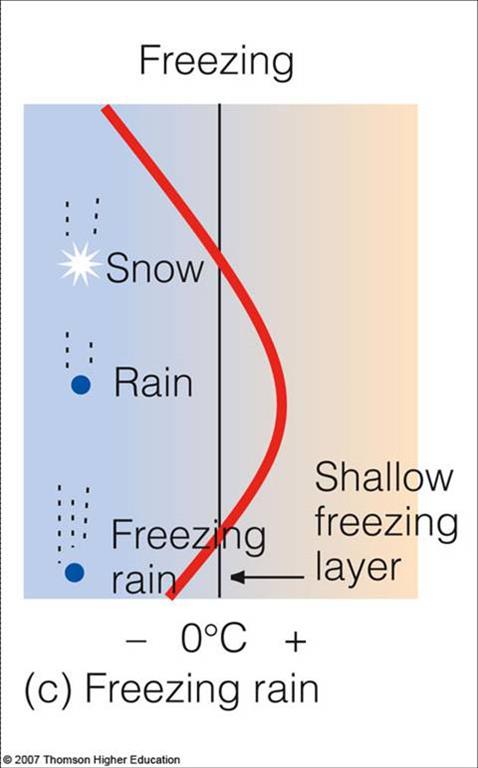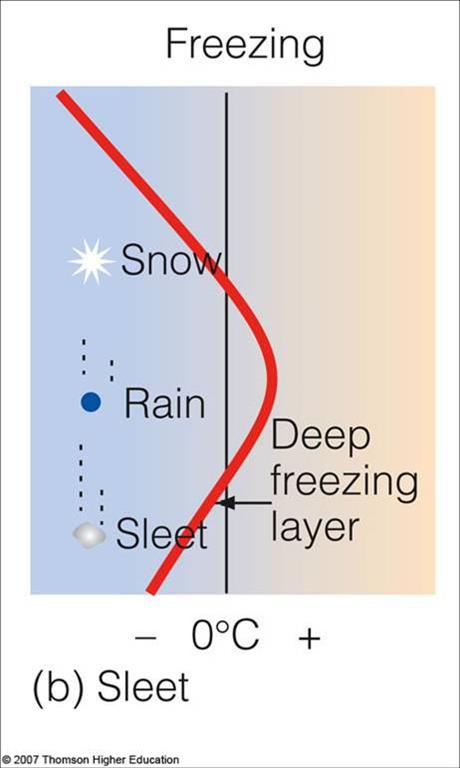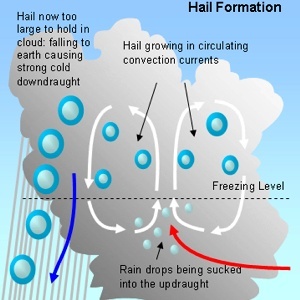Differences in Precipitation
2017-08-02 07:44:05.000 – Jillian Reynolds, Summit Intern
One of the questions that I usually get as a meteorologist is “what is the difference between freezing rain, sleet and hail?” Well, I am here today to tell you the differences in how each of these precipitation is formed and what they would look like to you on the surface.
The first type of precipitation that I will teach you about is freezing rain. Freezing rain develops in a freezing layer then will enter a thick layer of warm air that will make it melt. The liquid precipitation will then reach a thin layer of freezing air hugging the surface. The drops will then freeze on contact with the earth’s surface creating a coating of ice on whatever the raindrops touch.
Figure 1. Atmospheric profile of freezing rain taken from Apollo.Isc.vsc.edu.
Next up are the two types of precipitation that most people get mixed up: sleet and hail. Sleet will develop in a frozen layer of air. It will then fall through a thin layer of warm air and continue moving downward into a thick layer of frozen air on the surface that will end up refreezing it. They will reach the surface as little pellets of snow.
Figure 2. Atmospheric profile of sleet taken from Apollo.Isc.vsc.edu.
Hail usually forms during thunderstorms. Thunderstorms are associated with updrafts (air being pulled up into a thunderstorm). When these updrafts meet supercooled water droplets (liquid water drops that are surrounded by below freezing air), hail is made. The hailstone will undergo an up-and-down cycle within the thunderstorm as it collides with rain drops and other ice particles and gets forced down by gravity. It will then get pushed back up into the cloud by another updraft. It will eventually fall out of the thunderstorm, below the freezing line into the warm layer on earth’s surface. They will look like ice pellets in a wide range of sizes.
Figure 3. Diagram of hail formation taken from alabamawx.com.
Hopefully this clears up any misconceptions about different precipitation types!
Jillian Reynolds, Summit Intern







